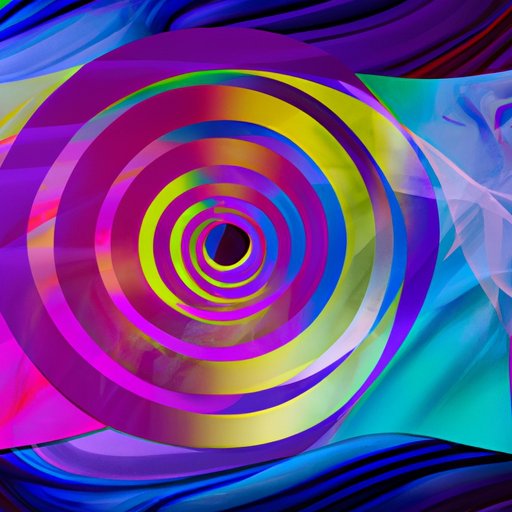Exploring the Mysteries of Resonance: A Comprehensive Guide
Resonance is a term that is used to describe a phenomenon that occurs in various fields, including physics, communications, music, and personal growth. It is a concept that explains how things are able to vibrate in harmony with one another. In this article, we’ll unlock the mysteries of resonance by exploring the science behind it, its role in communication and influence, its significance in music, and its impact on our personal lives.
Unlocking the Mysteries of Resonance: Exploring the Science Behind this Phenomenon
Resonance is a phenomenon that occurs when two or more objects or systems share the same natural frequency and begin to vibrate in unison. It happens through oscillation and vibration. Let’s look at some examples of resonance in everyday life:
- A child’s swing: when a child swings on a swing, they adjust their body movement to match the swing’s natural frequency, causing it to move higher and higher.
- Breaking a wine glass: if someone sings a high-pitched note near a wine glass, the glass can begin to vibrate in response to the sound waves. If the frequency of the sound matches the natural frequency of the glass, it can cause the glass to shatter.
- Tacoma Bridge Collapse: In 1940, the Tacoma Narrows Bridge in Washington State shook violently and ultimately collapsed because of strong resonance effects caused by steady wind at a windy day.
The Power of Resonance: How to Use Sound to Engage, Connect, and Influence
Resonance plays an important role in communication and influence. When we speak, our voice creates sound waves that can resonate with other people and evoke emotions. Tone, pitch, and pacing are all elements that can affect the way we resonate with others. If we want to create resonance when communicating, we need to align our messaging with our listener’s own values and preferences.
One example of resonance in public speaking is Martin Luther King Jr.’s famous “I Have a Dream” speech. His use of repetition, pacing, and passionate delivery evoked emotions and created resonance with his listeners.
In marketing, companies use resonance to sell their products by using language and visuals that align with their target audience’s values and interests. For example, Apple’s “Think Different” campaign resonated strongly with individuals who identified with creativity, innovation, and individuality.
Resonance in Music: A Deep Dive Into How Sound Waves Create Harmony and Dissonance
Music is another area where resonance plays a significant role. Sound waves are used to create musical notes. Every note has a specific frequency, and when two notes are played together, their sound waves can either enhance or detract from one another.
The elements that create harmony in music include the use of similar frequencies and certain consonant intervals, such as thirds, fifths, and sixths. Dissonance occurs when notes are played together and sound waves interfere with each other in a way that creates an unpleasant sound.
One famous example of the use of resonance in music is Beethoven’s Ninth Symphony. The triumphant “Ode to Joy” melody played in the final movement features a perfect fifth interval, which creates a sense of triumph and joy for the listener.
Finding Resonance in Life: Understanding How to Align Your Values, Goals, and Actions for Success
Resonance can play a significant role in our personal lives, as well. It is a powerful tool for personal growth and achievement. If we want to achieve success and happiness, we need to align our values, goals, and actions with one another. When these elements are aligned, we create a sense of resonance in our lives that can help us achieve our most important goals.
One way to create personal resonance is through visualization. By visualizing a specific goal or outcome, we can create a sense of alignment between our thoughts, feelings, and actions, which can help us achieve what we desire.
Another way to achieve personal resonance is through mindfulness. By staying present in the moment and being aware of our thoughts and feelings, we can create a deeper sense of alignment with ourselves and those around us.
Resonance vs. Dissonance: How to Create More Harmony and Less Conflict in Your Relationships
Finally, resonance plays an important role in our personal relationships. When we communicate with others in a way that is aligned with their values and preferences, we create a sense of resonance that can help us connect more deeply with them. Dissonance, on the other hand, can create conflict and distance between people.
To create more resonance in our relationships, we need to listen actively and communicate in a way that is aligned with the other person’s needs and desires. By doing this, we can create a sense of unity and harmony that can bring us closer together.
Conclusion
In conclusion, resonance is a powerful concept that applies to a range of fields, including physics, communications, music, and personal development. It is a tool that can help us achieve our goals, connect more deeply with others, and create a sense of harmony and unity in our lives. By understanding how resonance works, we can harness its power to achieve greater success, happiness, and fulfillment in all aspects of our lives.
